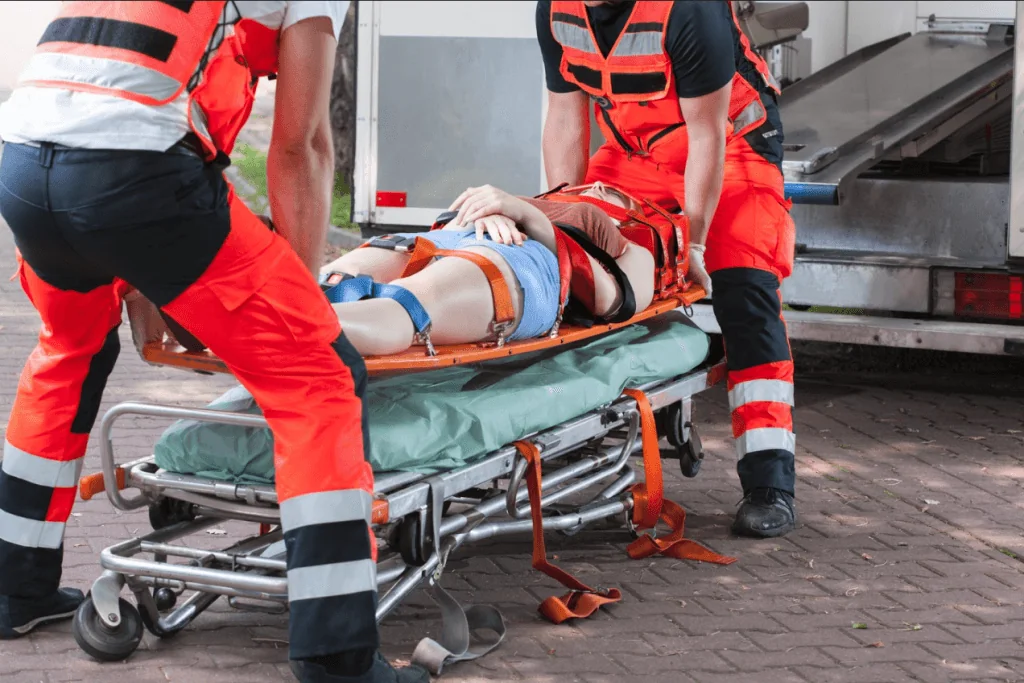Injury to the Subclavian Artery is Serious
I’m Ed Smith, a Sacramento Personal Injury Lawyer. The subclavian artery is one of the body’s most central blood vessels because it carries blood to the chest cavity and upper extremities. Without the blood supply from the subclavian artery, these sections of the body would not receive the oxygen and nutrients that they need to survive.
The heart is responsible for receiving blood from the lungs and the rest of the body and redistributing it back to the lungs and the body’s organs. When blood leaves the heart, it does so via either the pulmonary artery or the aorta, two of the biggest blood vessels in the patient’s body. As blood leaves the heart, it travels through the aorta and before branching off into other arteries. One of these arteries is called the subclavian artery. This is one of the largest arteries in the body and carries oxygenated blood to the upper extremities as well as the chest. This is a thick blood vessel with a significant carrying capacity that can cause serious problems if it is damaged.
What are the Consequences of an Injury to the Subclavian Artery?
If the subclavian artery becomes injured, this can have devastating consequences for the patient and for the function of the organs that receive blood from the subclavian artery. There are several different ways that this vessel could be damaged. For example, the patient could suffer chest trauma while playing sports or in a physical attack on the street. The subclavian artery occupies a significant amount of space in the chest, making it a vulnerable target. The vessel could also be damaged in an auto accident that leads to a puncture wound. Patients also suffer damage to the subclavian artery in bicycle accidents where the handlebars impact the patient’s chest. If the subclavian artery is damaged, blood will start to leak out from the artery into a space in the chest and upper extremities, leading to internal bleeding. If this isn’t addressed quickly, the organs in the chest could start to fail, and patients could lose the use of their arms. Eventually, the patient could potentially bleed to death. The repair of a subclavian artery tear is a complicated procedure requiring a highly trained vascular surgeon. This is why any suspicion of injury to the subclavian artery must be treated rapidly.
The Case Report
A middle-aged man was involved in a motor vehicle accident where he sustained blunt trauma that damaged his aorta. When he arrived in the emergency department, his heart rate was elevated, and his blood pressure was low, indicating that he was losing blood. A quick scan revealed that he had damaged his aorta; however, he had damaged other blood vessels as well. The imaging showed that the patient had a tear of the subclavian artery. The patient was whisked back to the operating room for a repair of his internal injuries. During the procedure, unfortunately, he suffered a posterior cerebral stroke. This is a known risk of any repair of the blood vessels that travel near the neck or the brain. The patient quickly received a CT scan that confirmed the stroke, leading to a brain injury, and treatment was initiated. While the patient recovered, it required an extensive amount of rehabilitation to regain baseline function and any delay in a stroke diagnosis has the potential to be devastating. In the future, the paper discusses entertaining the option of a delayed repair with a conservative approach to management. This could lower the potential of a stroke developing in a patient with a tear of the subclavian artery.
Moving Forward
The case report discussed in this article highlights the point that the subclavian artery is at risk of being damaged anytime trauma strikes the aorta. While most people are consumed with damage to the aorta given its size and function in the body, it is also important not to overlook damage to other structures because missing these damages could prove to be fatal. The subclavian artery is one of the first branches extending off of the aorta and is identifiable on many of the same scans. If damage to this structure is seen, it will be addressed quickly to avoid complications from developing. To prevent damage to this vital structure, it is important for patients to wear their seat belt properly at all times and make sure their seat belt is working correctly. If it isn’t, this could be an auto products liability problem that should demand the attention of an experienced personal injury attorney. Patients should take note of all their legal options before making any decisions.
Sacramento Personal Injury Lawyers
I’m Ed Smith, a Sacramento Personal Injury Lawyer. Victims who have been hurt in an accident should reach out to me for free, friendly advice at (916)-921-6400 or (800) 404-5400.
I belong to the Million Dollar Advocates Forum.
Please look over my verdicts and settlements at this location.
Ratings left by some of my earlier clients are available to view on Avvo, Yelp, and Google.
Image Attribution:
:dr cha [cs 856] cv

